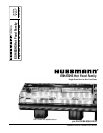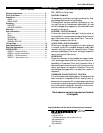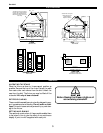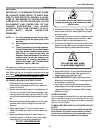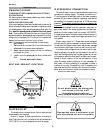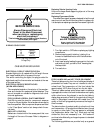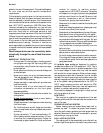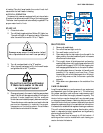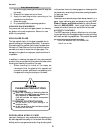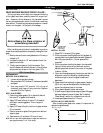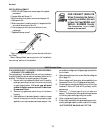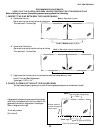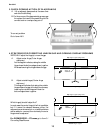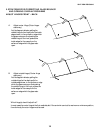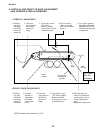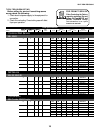
Rev. 0010
7
guide for the use of this equipment. The local health agency
for your area can provide specific temperature
requirements.
Critical attention must be given to the heat controls for
these hot tables. Both the upper and lower heat controls
must be adjusted to achieve proper food temperatures.
Hot foods should be held at a minimum temperature of at
least 140°F (60°C) according to 1995 FDA Food Code.
However, increasing the temperature too high will also
cause the food to overcook, dry out, lose its flavor, texture
and color. Food held for prolonged periods at high
temperatures will also lose some of their nutritional value.
Different foods will require different control settings. The
type of food, the quantities of food and length of time that
it is to remain in the hot table must be considered when
establishing control settings. Therefore, it must be the
user’s responsibility to establish the correct control settings
to maintain the food at the safest, tastiest and most saleable
condition.
Food temperatures can be accurately deter-
mined only through the use of food thermom-
eters!
IMPORTANT OPERATION TIPS:
* Preheat case 30 minutes before loading product
using higher settings. Self Service griddle type
merchandiser using Granite tiles require a longer
preheat period.
* Never place food directly into warmer. Always use
an inset and pan.
* Never pour water into a dry preheated warmer.
This may damage the unit. Always pour water into
warmer BEFORE preheating.
* Always use water in case wells, as it provides even
heat and humidity.
* Too much water or too much heat will cause
excessive condensation on the front glass,
decreasing visibility.
* Make sure all pans are in the well units no matter the
configuration.
*
Using thermometer, check product before
loading in case (150°-160°).
* Always use warmer in wet operation when warming
thick food items.
* Stir thick foods such as chili, fudge and chowders
often to keep foods uniformly heated and prevent
scorching.
* At start, set wells to "7", and overhead heat to "5".
After loading, recheck temperature every 1/2 hour
to see that unit is operating properly. Adjust the
thermostat (a higher number for hotter and a lower
number for cooler) to maintain product
temperature of 140°F
+
(60°C
.
) minimum. The setting
will depend on the type of product being displayed
and how much there is in the well. Be sure to test
product temperature with a thermometer
frequently for good product maintenance.
* Keep cover(s) on insets to maintain food quality and
temperature.
* Food must always be placed into a display pan over
the well, never directly into the well.
* Food should not be stacked above the top of the pan.
Food above the top of the pan will dry out rapidly.
* Food juice or gravy should be stirred frequently and
any meats should be basted with the gravy. Stir and
rotate foods as needed. Wipe up spills immediately
- for eye appeal now, and easier cleaning later.
* Food should be rotated periodically from the
bottom to top.
* If practical, the food should be covered during slow
sale periods to reduce dehydration.
* At end of the day, remove product and let case cool.
Then clean with soap and water (use oven cleaner
on the difficult spots). Polish and clean glass with a
good glass cleaner.
All griddle type units are designed to maintain
termperatures above the FDA guideline of 140°F. This is
product temperature, not air or griddle temperature. Due
to the open design of these units, they must be loaded
with product for proper operation. When units are empty,
they experience rapid rise of heated air from air outside
the case. This action gives empty units a false, lower than
desired, temperature reading. Loading the case traps the
air at the griddle, raising temperatures to the 165°F to
185°F range, keeping product well above the FDA
guidelines. Remember, these units must be loaded with
product to maintain safe product temperature.*
Food must be displayed in a single layer in direct contact
with the griddle at all times.
CONTROLS
The controls to regulate the temperature of the well
heaters, griddle, and the overhead heat are located at the
rear of the case.
OVERHEAD HEATING SYSTEM
Tubular heating units are located above each well to
provide top heat. To obtain the proper food tempera-
tures, the well heaters, griddles, and heat lamps must be
adjusted. Maximum limits should be avoided to prevent
overcooking or drying out food.
WELL HEATING SYSTEM
The heating well is thermostatically controlled with an
indicator light showing when the heater has cycled on and



